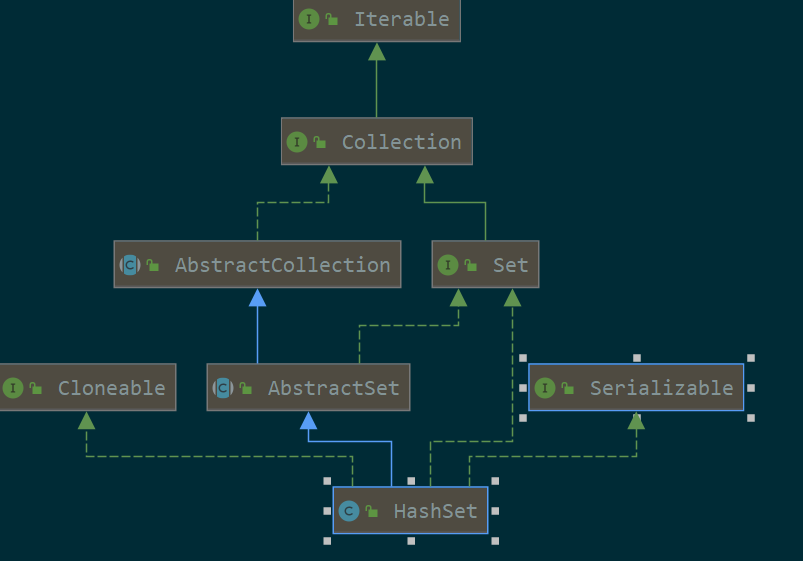13.Java SDK源码分析系列笔记-HashSet
1. 是什么
无序、不重复的集合,使用HashMap实现
2. 如何使用
public class HashSetTest
{
public static void main(String[] args)
{
HashSet<Integer> set = new HashSet<>();
set.add(1);
set.add(2);
set.remove(2);
System.out.println(set.contains(1));
System.out.println(set.contains(2));
System.out.println(set.contains(3));
}
}
3. 源码分析
3.1. uml

可序列化,可克隆
3.2. 构造方法
public HashSet() {
//就是使用的HashMap实现的
map = new HashMap<>();
}
3.3. 属性
public class HashSet<E>
extends AbstractSet<E>
implements Set<E>, Cloneable, java.io.Serializable
{
//底层使用map实现
private transient HashMap<E,Object> map;
//作为value的占位符
private static final Object PRESENT = new Object();
}
3.4. add方法
效率为O(1)
public boolean add(E e) {
//把e作为map的key,PRESENT作为value
return map.put(e, PRESENT)==null;
}
3.5. contains方法
效率为O(1)
public boolean contains(Object o) {
//调用HashMap的containsKey方法
return map.containsKey(o);
}
3.6. remove方法
效率为O(1)
public boolean remove(Object o) {
//调用HashMap的remove方法
return map.remove(o)==PRESENT;
}
4. 总结
HashSet底层是通过HashMap实现的,value使用new Object()作为占位符




 浙公网安备 33010602011771号
浙公网安备 33010602011771号